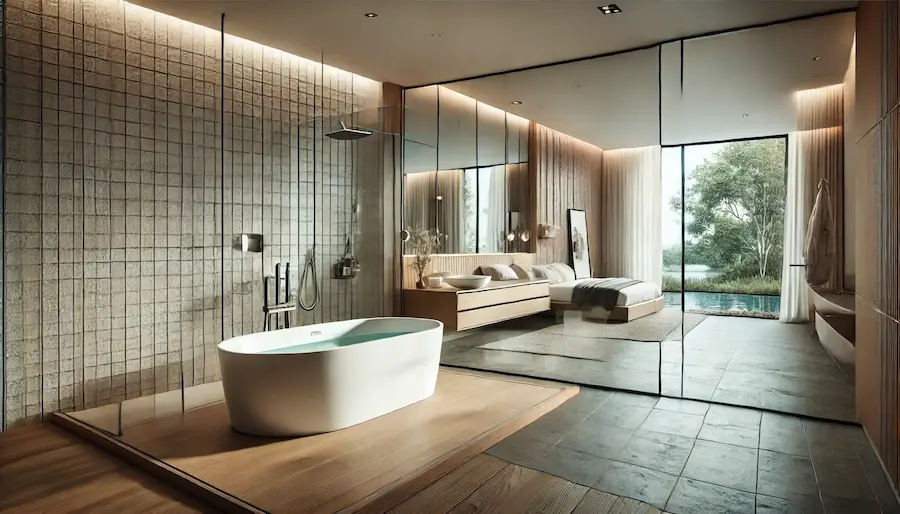Open-plan bathrooms seamlessly integrate bathing spaces with adjoining areas, such as bedrooms, to create a spacious and contemporary living environment. This design approach emphasizes openness and fluidity, often incorporating minimalistic elements and innovative layouts.
Introduction to Open-Plan Bathrooms
An open-plan bathroom eliminates traditional barriers, fostering a unified space that enhances the sense of luxury and modernity. This design is particularly popular in master suites, where the bathroom and bedroom merge to form a cohesive retreat.
History and Origins of Open-Plan Bathrooms
The concept of open-plan living gained prominence in the mid-20th century, emphasizing open, flowing spaces in residential design. Applying this concept to bathrooms is a more recent trend, reflecting a shift towards personalized and expansive home environments that prioritize comfort and aesthetic appeal.
Key Features of Open-Plan Bathrooms
- Seamless Integration: Open-plan bathrooms blend with adjacent spaces, often without full walls or doors, creating a continuous flow.
- Modern Aesthetics: They typically feature contemporary fixtures, clean lines, and minimalist decor to enhance the sense of openness.
- Natural Light: Large windows or strategic lighting are used to brighten the space, contributing to an airy and inviting atmosphere.
- Innovative Layouts: Designs may include freestanding bathtubs, open showers, and integrated vanity areas that complement the overall room design.
Applications of Open-Plan Bathrooms
- Master Suites: Combining the bedroom and bathroom into a single open space creates a luxurious and expansive personal retreat.
- Loft Apartments: Open-plan bathrooms can maximize space and light in open-concept living areas, enhancing the modern aesthetic.
- Luxury Hotels: High-end accommodations often feature open-plan bathrooms to provide guests with a unique and indulgent experience.
Considerations When Designing Open-Plan Bathrooms
- Privacy: The lack of traditional barriers may raise privacy concerns; solutions include partial partitions, frosted glass, or strategic furniture placement.
- Ventilation: Adequate ventilation is crucial to manage humidity and prevent moisture-related issues in the adjoining spaces.
- Plumbing and Drainage: Proper planning ensures that water does not escape into living areas, protecting flooring and furnishings.
- Aesthetic Cohesion: Maintaining a consistent design theme between the bathroom and adjoining space is essential for visual harmony.
Conclusion
Open-plan bathrooms offer a modern and luxurious approach to residential design, emphasizing space, light, and seamless integration with adjoining areas. By carefully considering factors such as privacy, ventilation, and aesthetic cohesion, homeowners can create a functional and visually appealing open-plan bathroom that enhances their living environment.
